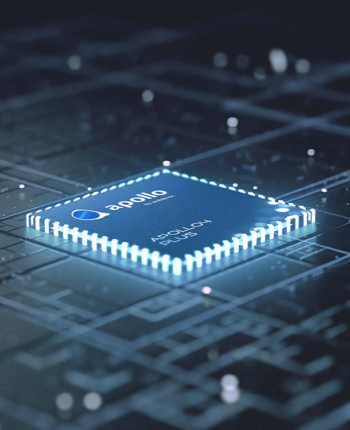
“We go on to discover hyperscaling of AI models leading to greater overall performance, with seemingly no close in sight,” a pair of Microsoft researchers wrote in Oct inside of a website put up asserting the company’s massive Megatron-Turing NLG model, inbuilt collaboration with Nvidia.
8MB of SRAM, the Apollo4 has more than more than enough compute and storage to manage complicated algorithms and neural networks though exhibiting vibrant, crystal-crystal clear, and easy graphics. If additional memory is necessary, external memory is supported via Ambiq’s multi-little bit SPI and eMMC interfaces.
Prompt: A wonderful home made online video displaying the people of Lagos, Nigeria while in the calendar year 2056. Shot using a cellphone camera.
Prompt: Drone check out of waves crashing towards the rugged cliffs along Large Sur’s garay stage beach. The crashing blue waters create white-tipped waves, while the golden light-weight with the placing Sunlight illuminates the rocky shore. A small island which has a lighthouse sits in the space, and eco-friendly shrubbery covers the cliff’s edge.
We show some example 32x32 image samples within the model from the impression under, on the proper. To the still left are earlier samples from the Attract model for comparison (vanilla VAE samples would seem even worse and even more blurry).
the scene is captured from a floor-amount angle, pursuing the cat carefully, offering a minimal and intimate perspective. The image is cinematic with heat tones and also a grainy texture. The scattered daylight amongst the leaves and vegetation over creates a heat distinction, accentuating the cat’s orange fur. The shot is obvious and sharp, having a shallow depth of field.
This really is interesting—these neural networks are Discovering exactly what the Visible environment looks like! These models normally have only about a hundred million parameters, so a network trained on ImageNet needs to (lossily) compress 200GB of pixel knowledge into 100MB of weights. This incentivizes it to find out essentially the most salient features of the information: for example, it will eventually likely discover that pixels close by are prone to possess the very same color, or that the entire world is designed up of horizontal or vertical edges, or blobs of various colours.
She wears sun shades and red lipstick. She walks confidently and casually. The street is damp and reflective, creating a mirror impact in the colourful lights. A lot of pedestrians wander about.
Prompt: The digicam right faces vibrant structures in Burano Italy. An adorable dalmation looks via a window on a making on the ground flooring. Lots of people are strolling and biking together the canal streets in front of the buildings.
Up coming, the model is 'trained' on that data. Ultimately, the trained model is compressed and deployed to your endpoint units where they're going to be put to work. Each of these phases involves considerable development and engineering.
They are behind image recognition, voice assistants and even self-driving car technology. Like pop stars on the music scene, deep neural networks get all the eye.
We’re very enthusiastic about generative models at OpenAI, and have just introduced 4 tasks that progress the point out from the artwork. For every of these contributions we may also be releasing a complex report and resource code.
Suppose that we used a newly-initialized network to generate two hundred visuals, every time starting off with a unique random code. The concern is: how need to we alter the network’s parameters to motivate it to supply somewhat much more plausible samples Down the road? Detect that we’re not in an easy supervised environment and don’t have any explicit wished-for targets
Energy displays like Joulescope have two GPIO inputs for this intent - neuralSPOT leverages both of those that can help establish execution modes.
Accelerating the Development of Optimized AI Features with Ambiq’s neuralSPOT
Ambiq’s neuralSPOT® is an open-source AI developer-focused SDK designed for our latest Apollo4 Plus system-on-chip (SoC) family. neuralSPOT provides an on-ramp to the rapid development of AI features for our customers’ AI applications and products. Included with neuralSPOT are Ambiq-optimized libraries, tools, and examples to help jumpstart AI-focused applications.
UNDERSTANDING NEURALSPOT VIA THE BASIC TENSORFLOW EXAMPLE
Often, the best way to ramp up on a new software library is through a comprehensive example – this is why neuralSPOt includes basic_tf_stub, an illustrative example that leverages many of neuralSPOT’s features.
In this article, we walk through the example block-by-block, using it as a guide to building AI features using neuralSPOT.
Ambiq's Vice President of Artificial Intelligence, Carlos Morales, went on CNBC Street Signs Asia to discuss the power consumption of AI and trends in endpoint devices.
Since 2010, Ambiq has been a leader in ultra-low power semiconductors that enable endpoint devices with more data-driven and AI-capable features while dropping the energy requirements up to 10X lower. They do this with the patented Subthreshold Power Optimized Technology (SPOT ®) platform.
Computer inferencing is complex, and for endpoint AI to become practical, these devices have to drop from megawatts of power to microwatts. This is where Ambiq has the power to change industries such as healthcare, agriculture, and Industrial IoT.
Ambiq Designs Low-Power for Next Gen Endpoint Devices
Ambiq’s VP of Architecture and Product Planning, Dan Cermak, joins the ipXchange team at CES to discuss how manufacturers can improve their products with ultra-low power. As technology becomes more sophisticated, energy consumption continues to grow. Here Dan outlines how Ambiq stays ahead of the curve by planning for energy requirements 5 years in advance.
Ambiq’s VP of Architecture and Product Planning at Embedded World 2024
Ambiq specializes in ultra-low-power SoC's designed to make intelligent battery-powered endpoint solutions a reality. These days, just about every endpoint device incorporates AI features, including anomaly detection, speech-driven user interfaces, audio event detection and classification, and health monitoring.
Ambiq's ultra low power, high-performance platforms are ideal for implementing this class of AI features, and we at Ambiq are dedicated to making implementation as easy as possible by offering open-source developer-centric toolkits, software libraries, and reference models to accelerate AI feature development.

NEURALSPOT - BECAUSE AI IS HARD ENOUGH
neuralSPOT is an AI developer-focused SDK in the true sense of the word: it includes everything you need to get your AI model onto Ambiq’s platform. You’ll find libraries for talking to sensors, managing SoC peripherals, Microcontroller and controlling power and memory configurations, along with tools for easily debugging your model from your laptop or PC, and examples that tie it all together.
Facebook | Linkedin | Twitter | YouTube